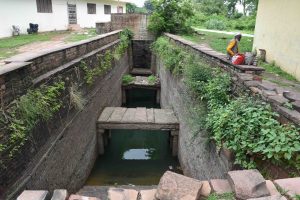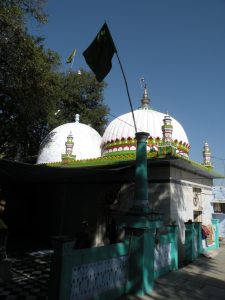Udaypur उदयपुर ادے پور (Madhya Pradesh). Stepwell of the time of Shāh Jahān.
Udaypur उदयपुर (Madhya Pradesh). Udayeśvara temple
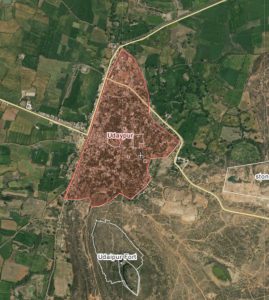
Udaypur उदयपुर (Madhya Pradesh). Courtesy Wikimapia.
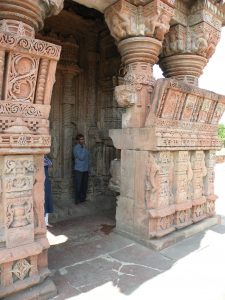
Udayeśvara temple, east side, mukhamaṇḍapa. Courtesy Zenodo.
Udaypur उदयपुर (Madhya Pradesh). Record of a temple procession in V.S. 1394
Inscription in the southern forehall (mukhamaṇḍapa) of the Udayeśvara temple at Udaypur, district Vidisha, Madhya Pradesh. It is engraved on the side of a sculptured balustrade (vedikā) visible to the right of the entrance passage. The record is badly weathered on the sides but contains six lines written in devanāgarī script. It refers to a jātrā, i.e. yātrā festival and pilgrimage by one Harirāja (?) on Thursday, second day of the dark lunar fortnight of Māgha in the expired Vikrama year 1394, which gives the date 8 January 1338 CE.
Udaypur tri-lingual stepwell inscription dated 1645 CE
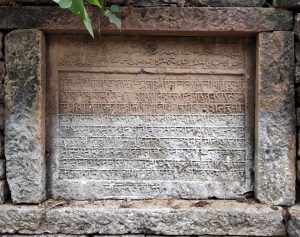
Udaypur (Madhya Pradesh). Stepwell inscription in Arabic, Persian and Sanskrit.
On a stone slab affixed into the right side wall of a stepwell known as Qanungo Baoli, located on the eastern outskirts of Udaypur, Vidisha District, Madhya Pradesh. A tri-lingual inscription of 13 lines carved in relief with the first three lines written in Arabic and Persian in nastaʿlīq script, and the next ten lines written in Sanskrit in nāgarī script. It records the construction of the stepwell by Gokuladāsa and Dāmodaradāsa, sons of Qānungo Haridāsa of Māthura kāyastha family, during the reign of Mughal emperor Shāhjahān (r. 1628-58). The date is given in three different eras—vikrama saṃvat 1701, śaka 1566 and hijri 1054—equivalent to Friday, 13 January, 1645 CE.
Gatehouse inscription at the tomb of Shaykh Kamal al-Din at Dhar
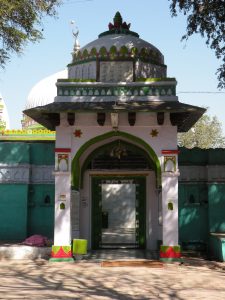
Dhār (Madhya Pradesh). Tomb of Kamāl al-Dīn, gatehouse.
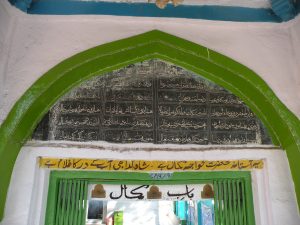
Dhār (Madhya Pradesh). Tomb of Kamāl al-Dīn, gatehouse inscription.
Dhar Inscription with verses from the Qur’an
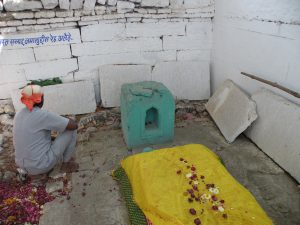
Dhār (Madhya Pradesh). Slabs in precinct of the tomb of Kamāl al-Dīn.
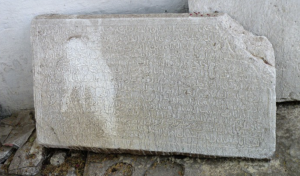
Inscribed slab with verses from the Qur’ān.
Dhār धार دهار (Madhya Pradesh). Tomb of Shaykh Kamāl al-Dīn (circa 1238-1330)
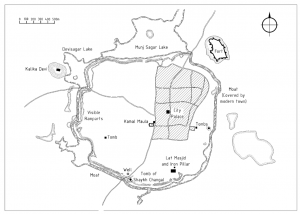
Dhār धार دهار (Madhya Pradesh). Plan of the historical city after Journal of the Royal Asiatic Society v. 22. (© Royal Asiatic Society).
Dhar Inscription of Dilawar Khan dated AH 795
Dhār Inscription of Dilāwar Khān dated AH 795.
Singhpur stepwell with an inscription of VS 1535/1479 CE
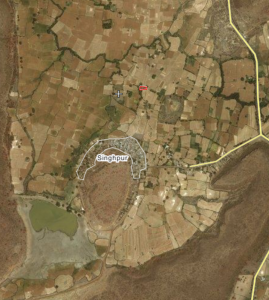
Singhpur (Ashoknagar अशोकनगर). Rājmatī stepwell (Wikimapia).

Singhpur stepwell inscription of VS 1535 (© Saarthak Singh).
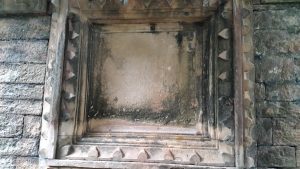
Singhpur stepwell, damaged companion inscription (© Saarthak Singh).
Singhpur (Ashoknagar). Stepwell with inscriptions in mixed Sanskrit recording the construction of the stepwell by Rājamatī in VS 1535.
Singhpur stepwell inscription of VS 1535/1479 CE
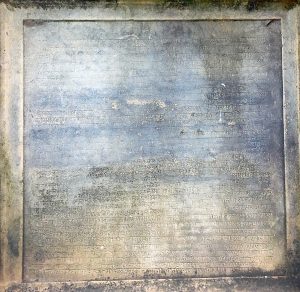
Singhpur (Ashoknagar). Stepwell inscription dated VS 1535 (© Saarthak Singh)
Singhpur (Ashoknagar). Inscription in the Rājmatī stepwell recording the construction of the stepwell by Rājamatī, the daughter of Bhairavadāsa who was the son of Uvāra, the son of Chajjala of Sirohanagara. Gives the details of the gifts and donations made to Rājamatī by several rulers, namely Sher Khān of Chanderi, Ghiyās al-Dīn of Māḍai (i.e. Ghiyāth al-Dīn of Māndū, reg. 1469-1500), Husayn Shāh (reg. 1458-79) of Jauṇapura (i.e. Jaunpur), Barbak Shāh (reg. 1459–74) of Pandua, Sultān (name not given) of Ḍhili (i.e. Delhi), Tughluq Shāh of Thatta [presumably a reference to Jam Tughluq (d. 1442) of the Samma dynasty], Qutb al-Din of Gujarāt [presumably Qutb al-Dīn being applied anachronistically to Maḥmūd Begada, reg. 1458-1511], the Bahmani Sultān (name not given) of Vidara (i.e. Bidar). Also mentions Rājamatī’s son named Rāmacandra who was a mahākavi and a favourite (?) of Ghiyās al-Dīn and Nāsir al-Dīn. The pradhāna was Devidāsa and the masons were Vu(Bu)rahāmatasuṣu(khu), Mūla and others. The writer was Guṇasudara.
